An Article In Meteorite-Times Magazine
by Robert Verish
![]()
An Article In Meteorite-Times Magazine
by Robert Verish
The Bouse Meteorite
Image Gallery of the 15.7 gram stone
This month's article is about a meteorite that was found back in March of 2004 in La Paz County, Arizona, by a Mr. Richard McColly who is a wintertime resident of Bouse, Arizona. It was just north of this small town in northwestern Arizona that Mr. McColly, a meteorite hunter, found the first of several pieces of an L-chondrite. He had his finds authenticated and classified at ASU, and in Volume 91 of the Meteoritical Bulletin his "Bouse (L4-6)" meteorite was formally cataloged.
According to this Bulletin, there were 3 pieces of this meteorite found by Mr. McColly. But subsequent to that publication, an undetermined number of additional pieces have been found (reportedly by residents local to Bouse) and some of these stones have entered into various personal collections by way of eBay auctions (see "ADDENDUM: " and "REFERENCES: ",below).
The images that appear in this article are of one of these "3 original pieces", and it has a mass of 15.7 grams. I recently acquired this specimen directly from Mr. McColly, through a mutual friend and fellow resident of Oregon. Although I had the opportunity to purchase, via eBay, one of the subsequently found stones, my main interest was to examine one of the original 3 finds.
I would like to share (with those that have a like interest) my examination of this specimen by way of an image gallery, here in this article.
The above image depicts the subject specimen resting upon a 1 centimeter cube scale.
Except for the images in the "ADDENDUM: " and "REFERENCES: " (below), all of the following images of this specimen are by this author.
NOTE:
See "UPDATE" at the end of this article.
All of these images by other collectors in the "ADDENDUM: " and "REFERENCES: " (below), are of specimens that were subsequently purchased (typically from eBay auctions) after the "Bouse meteorite" was classified and published in the Meteoritical Bulletin (MetBull). They are not images of any of the "original 3 stones" used in the original study and classification. Consequently, none of these "subsequently purchased" specimens have been examined, let alone (visually) paired, by the classifier to the "Bouse meteorite" that appears in the MetBull. Although there is little disgreement that the lithology of all the Bouse specimens is identical, there has been much conjecture raised that Bouse (L4-6) is paired to NWA 869 (L4-6), so that makes the clarification of the provenance of each of the Bouse stones that much more critical.
"Click" on the above image of the 15.7gram stone of the Bouse (L4-6) Meteorite for a Close-Up view!!
As can be seen in the above image, this specimen exhibits the characteristics of a typical "desert-weathered" chondrite. In this particular case the signs of mechanical weathering are evident. For instance, the relict fusion-crust is all but non-existent. The poorly developed rind is so patchy and thin that the outline of chondrules are visible. In addition, the exterior is smooth to the touch. This is all evidence that this stone has had a history of being exposed on a dry, well-drained (sandy) surface and was abraided by wind-borne silt, just enough abrasion to polish the exterior, yet enough to remove any rusty rind that would try to develop.
"Click" on the above image of the 15.7gram stone of the Bouse (L4-6) Meteorite for a Close-Up view!!
The above image is an attempt to give some idea as to the size of this 15.7g meteorite. For a sense of scale, the specimen was placed next to a 1 cm cube scale. Note that the 1 cm cube has been turned over and now displays the "B"-side (for Bottom-side). This denotes that this is the bottom-side of this find; the side that was down and in contact with the ground when it was found.
In the image below, the meteorite has been placed on top of a 1 cm cube scale.
"Click" on the above image of the 15.7gram stone of the Bouse (L4-6) Meteorite for a Close-Up view!!
In the image below, the meteorite is still resting on top of the 1 cm cube scale, but has been turned clockwise 90 degrees.
"Click" on the above image of the 15.7gram stone of the Bouse (L4-6) Meteorite for a Close-Up view!!
In the image below, the meteorite is still resting on top of the 1 cm cube scale, but has been turned clockwise 90 degrees.
"Click" on the above image of the 15.7gram stone of the Bouse (L4-6) Meteorite for a Close-Up view!!
The image below, is another view of the "bottom-side" as in one of the above images, but it has been taken at a different angle. At first, it looked like there was some dirt still attached to the exterior. Upon closer inspection, it became apparent that the "dirt" was actually rust-colored caliche.
"Click" on the above image of the 15.7gram stone of the Bouse (L4-6) Meteorite for a Close-Up view!!
Being somewhat protected from the elements, a caliche deposit was able to accumulate in a crevice on the bottom-side. Sand grains from the ground, which was in contact with this side of the stone, became cemented and are still attached to this stone.
The image, below, was taken through the eyepiece of a microscope.
"Click" on the above image of the 15.7gram stone of the Bouse (L4-6) Meteorite for a Close-Up view!!
Sand grains such as these have been used in the past by forensic specialists for comparison purposes in order to authenticate the recovery location of finds. Most recently was an abstract in MAPS in Vol.42 (March 2007).
The image below, is the same view as the image above, but it was taken at a different angle.
"Click" on the above image of the 15.7gram stone of the Bouse (L4-6) Meteorite for a Close-Up view!!
The area north and east of Bouse, Arizona, is underlain by silty sediment of the Bouse Formation (which coincidently underlies the Franconia area). Geologists have debated whether these sediments were deposited in lakes or were deposited by the ancestral Colorado River. For forensic specialists, it would be important to know which body of water deposited these sand grains. An additional complication is that the specific locations for all the Bouse finds is still debatable. There have been multiple finders for the Bouse stones subsequent to the original 3 finds, and their coordinates have not been published. But if these sand grains could be compared to sand grains in caliche that is attached to terrestrial rocks at the exact find location, it could serve as independent confirmation that would authenticate these finds as being from the Bouse area of Arizona.
The image below depicts another area on the exterior of the specimen, and was taken through the eyepiece of a microscope. It shows that the deeper pits have caliche-cemented sand grains still attached.
"Click" on the above image of the 15.7gram stone of the Bouse (L4-6) Meteorite for a Close-Up view!!
The image below, is of the same crevice, but it was taken at a different angle.
"Click" on the above image of the 15.7gram stone of the Bouse (L4-6) Meteorite for a Close-Up view!!
The image below depicts another area on the exterior of the specimen, and was taken through the eyepiece of a microscope. It shows that the deeper pits have caliche-cemented sand grains still attached.
"Click" on the above image of the 15.7gram stone of the Bouse (L4-6) Meteorite for a Close-Up view!!
The image below depicts another area on the exterior of the specimen, and was taken through the eyepiece of a microscope. It shows that the deeper pits have caliche-cemented sand grains still attached.
"Click" on the above image of the 15.7gram stone of the Bouse (L4-6) Meteorite for a Close-Up view!!
And below is the actual classification as determined by ASU:
It was my original intention to cut this specimen and show images of the interior, but I couldn't find a way to do this without the possibility of destroying the caliche-cemented sand grains. In place of those images, I will refer, instead, to one of the other "original 3 stones" that has already been cut and has been imaged by Larry Sloan.
Should anyone else have images of the other "Bouse stones", I would be interested in seeing those images. With your permission, I would like to post them to this web page in future updates. In the meanwhile, this specimen will be kept available for analysis by forensic experts.
The meteorite shown in this article was first published in the 2007 Meteoritical Bulletin No. 91.
If you have any information relating to the Bouse meteorite stones, please contact me by email: Bolide*chaser
Since this article was first published in early August 2007, other people with "Bouse stones" have responded to my above request "to share their images of other Bouse Stones". John Kashuba was gracious to give me permission to post his image of his Bouse specimen here in this update. In his image, John has arrows pointing to interesting features in his slice, such as, an armoured chondrule and a dark inclusion:
Photo of Bouse (slice) from the Collection of JOHN KASHUBA:
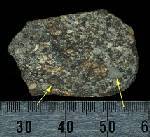
Should anyone else have images of the exterior of their "Bouse stones", I would be particularly interested in seeing those images, as well. And again, with your permission, I would like to post them to this addendum in future updates.
My other Bob's Findings articles on the Bouse Meteorite:
| September 2007 |
The Bouse Meteorite - Part 2
Is there any evidence that Bouse (L4-6) is paired to NWA 869 (L4-6)?? |
| November 2007 |
Sand Encrusted Stones of the NWA 869 Meteorite
Sand grains from the Sahara Desert are caliche-cemented to the exterior of unwashed chondritic stones of the NWA 869 meteorite. [See "UPDATE" to this November 2007 article.] |
REFERENCES:
Bouse (L4-6) meteorite entry in the Meteoritical Bulletin:
http://tin.er.usgs.gov/meteor/metbull.php?code=35487
List of all "L4-6" meteorites in Meteoritical Bulletin:
http://tin.er.usgs.gov/meteor/metbull.php?sea=L4-6&sfor=types&stype=exact&lrec=50&srt=
Photo of Bouse (endcut) from the Collection of LARRY SLOAN:
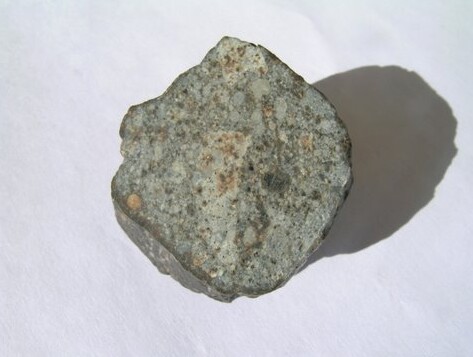
http://www.encyclopedia-of-meteorites.com/test/bouse_larry_sloan.jpg
Photo of Bouse (slice) from the Collection of JAN WORECZKO:
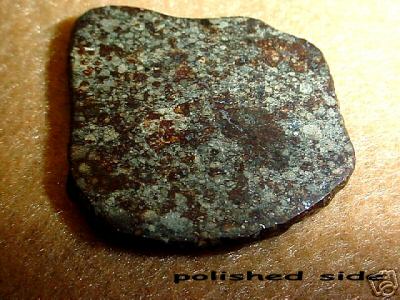
http://www.encyclopedia-of-meteorites.com/test/35487_3705_183.jpg
Google Earth - find location for Bouse meteorite according to Meteoritical Bulletin:

"Click" HERE for link to download the Meteoritical Bulletin location file (meteorites.kml) on Google Earth.
Google Earth - "actual" find location for Bouse meteorite, according to anonymous meteorite hunter:
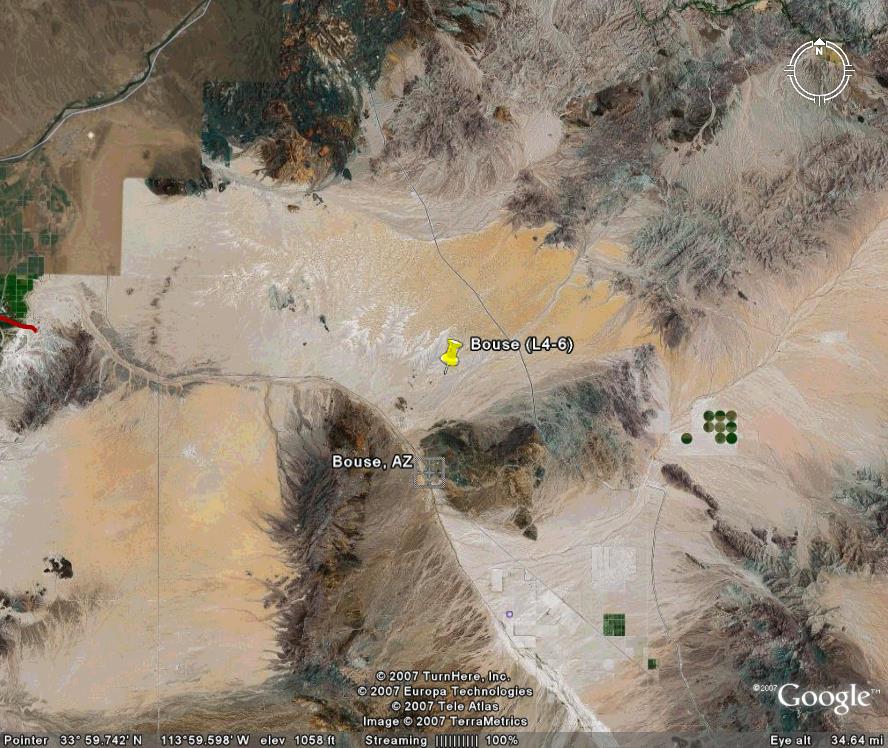
Google Search result for
BOUSE strewnfield: "Where is this field located?"
La Paz County, Arizona:
http://en.wikipedia.org/wiki/La_Paz_County,_Arizona
Bouse, Arizona:
http://en.wikipedia.org/wiki/Bouse%2C_Arizona
The Bouse Formation:
GSA 2007b Abstract on Bouse Formation
"...lacustrine origin for the Upper Miocene to Pliocene Bouse Formation...":
http://bulletin.geoscienceworld.org/cgi/content/abstract/109/6/767
"Mineralogical maturity in dunefields of North America, Africa and Australia":
Abstract in Science Direct - comparison of sand in dunefields
"Eolian Sand Transport Pathways in the Mojave Desert":
http://esp.cr.usgs.gov/info/sw/eolian/
Source for the sand grains in the Parker Dunefield determined:
"A more detailed chemical analysis of the sands backs up Muhs' contention. Samples of Mojave sands all have less than 79 percent quartz and greater than 10 percent aluminum oxide, says James R. Zimbelman, a geologist at the Smithsonian's Center for Earth and Planetary Studies in Washington, D.C. Meanwhile, samples of sand from the Parker dunes all have greater than 81 percent quartz and less than 6 percent aluminum oxide. Those percentages are indistinguishable from those of sediments taken from the Colorado River.
Also, grains of sand from the Parker dunes seem to be rounder and more weathered and therefore probably are older than the freshly eroded Mojave sands. Zimbelman and Steven H. Williams of Colorado Springs, Colo., published results of their analyses in the April Geological Society of America Bulletin."
http://www.sciencenews.org/articles/20021019/bob9.asp
Electron microscope images: several studies show the surface of various sand grains:

http://alliance.la.asu.edu/dorn/VarnishPages/RockCoatingsWeb/DesertRockCoatings.html
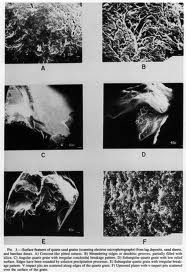
AAPG/Datapages, Inc. DOI Citation
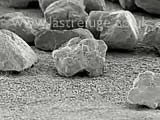
Sand, Scanning electron microscope image sequence, pan across sand grains showing texture.
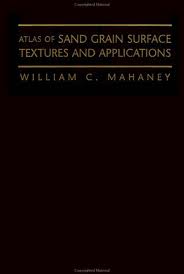
http://www.amazon.com/Atlas-Grain-Surface-Textures-Applications/dp/0195138120
"Sands of the World":
http://www.chariho.k12.ri.us/curriculum/MISmart/ocean/pixindex.html
"Studies involving the source of sand grains from Arizona deserts":
http://www.desert.com/petroweb/learn.php
"Sand grains from the Sahara Desert":
http://www.chariho.k12.ri.us/curriculum/MISmart/ocean/gallery1.htm
"Virtual Microscope Interface":
http://virtual.itg.uiuc.edu/data/index.php#LM_nwa869.jar
"The Life & Love of Sand Dunes"
(Text & Photos by Wayne P. Armstrong):

http://www.desertusa.com/magjan98/dunes/dune2.jpg
"Authenticating the recovery location of meteorites":
Abstract on IngentaConnect.com
"MeteoriteArticles.com":
http://www.meteoritearticles.com/coltessera.html
The Mark Bostick article, as it was discussed on the Meteorite-List.
For for more information, please contact me by email:
Bolide*chaser
